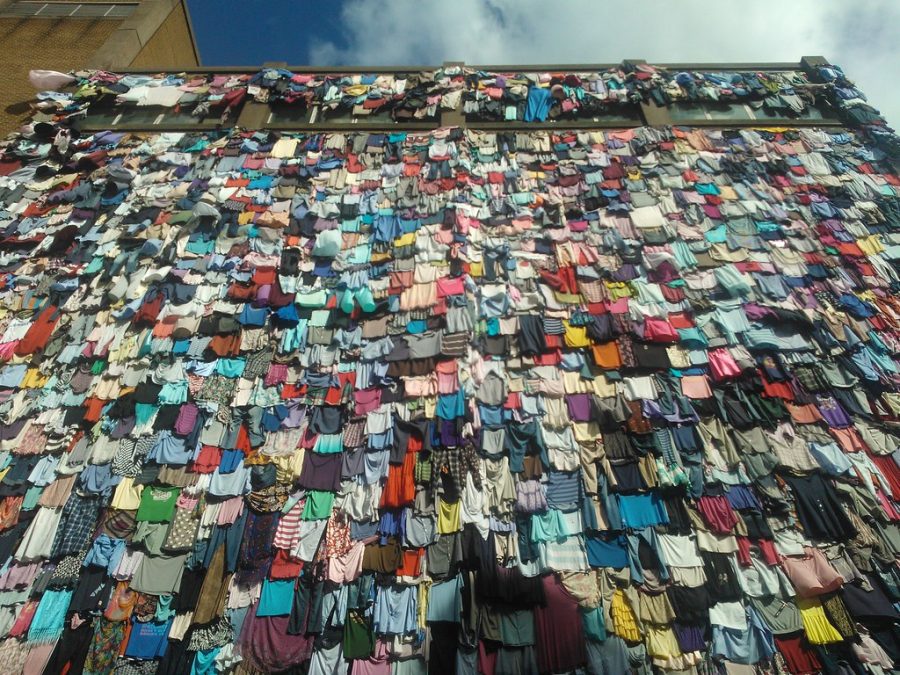The problem with fast-fashion
Clothes hang on a wall. The impacts of fast fashion are immense, even if we don’t see them directly.
December 3, 2021
This piece was also published in The Echo Magazine 24.1.
You’re scrolling through your Instagram feed when you stumble upon some of the coolest sweatshirts you’ve ever seen. It’s an ad. Most likely, what you’re seeing is fast fashion, fashionable clothing that sports trendy designs that you might not see at your favorite stores. Unless, of course, your favorite stores include Forever 21, H&M, Zara and more. You may have even heard before that fast fashion clothing is typically created under conditions not so favorable in the world of ethical labor practices, but what about the devastating environmental impact?
The reason these kinds of clothes are so new, cool and trendy is because they are created very quickly, and companies have the labor force to make new designs and lots of them for very cheap and very fast. This is fast fashion. Whether or not the labor is done by humans is irrelevant when discussing the environmental impact of fast fashion. When ten shirts only set you back $30, or even less, it seems like a “steal,” or an insanely good deal. In reality, you don’t need those ten shirts; even if you have more than enough money and space to hold them, you don’t need those ten shirts.
Overconsumption is a common habit in America these days, and has been growing in the past few years. In the past two years alone, overconsumption and online shopping skyrocketed due to the pandemic. Among this escape from physical stores, fast fashion became more popular among consumers as it was easily accessible via online stores like AliExpress, Shein and most of all, Amazon. You may have heard you can search for Amazon products on AliExpress to get the best price, alongside other brands such as HydroFlask, via a similar method. But these all have the same, taxing cost on the environment.
Moreover, while the United States and Europe make up for only 12% of the global population, 60% of private spending is done by their combined populations. This is highly attributed to the growth of e-commerce, something you may hear when people talk about how malls and stores are closing nationwide. Considering that 85% of clothing Americans consume (3.8 billion pounds) ends up in landfills every year, this creates an enormous problem; there’s too much clothing and it’s not being disposed of properly.
If you want to truly experience unique clothing, try upcycling or supporting upcycling artisans through Depop and Etsy, two apps that host a marketplace for anyone to sell clothes, used, upcycled or even new. Upcycling is taking used clothes and turning them into new clothes, generating a one of a kind piece that will stand out over any article of fast fashion, name-brand, or other unnecessary products. Cutting down on consumption is one of the ways that we, as humans, will help save this one planet that can’t speak for itself and suffers in silence.


